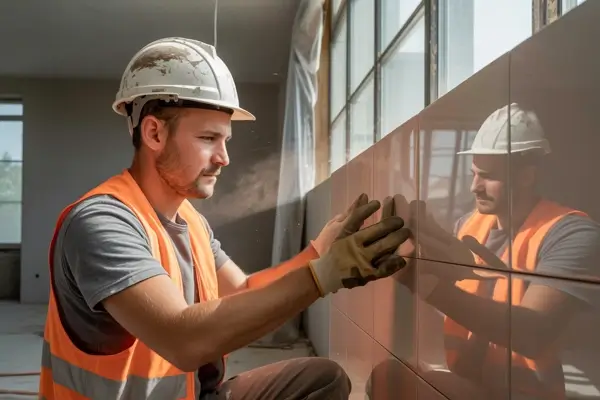Ceramic tiling Risk Assessment

A comprehensive Risk Assessment for ceramic tiling.
Ceramic wall tiles are an exceptionally durable and visually appealing option for a wide array of applications in both residential and commercial environments. Particularly favoured in kitchens and bathrooms, these tiles serve as protective backsplashes and are commonly installed on shower walls, effectively shielding the underlying surfaces from moisture, mould, and unsightly stains. Their water-resistant properties encompass not only functional benefits but also contribute to maintaining a clean and hygienic environment.
Beyond their protective function, ceramic tiles can be creatively utilized as striking feature walls, infusing spaces with depth, texture, and character. Their versatility shines in wet rooms, where their inherent ability to resist water damage is crucial. Available in an extensive range of colours, intricate patterns, and various finishes, ceramic wall tiles offer limitless design possibilities. This versatility makes them an ideal choice for enhancing both practical functionality and aesthetic appeal in any architectural or interior design undertaking.
This document is:
- Recognised by local authorities
- Recognised by principal contractors
- Suitable for CDM sites
- Approved by H&S managers
It increases your chance of winning tenders and has been written by trained health and safety professionals.
If you want others to have confidence in your company, download and buy the proper documents today.
As with all our documents, our risk assessments are in Word™ format, available for instant download and use, and only need to be bought once.
Once you buy and download this document, it's yours to use repeatedly.
Download today's risk assessment, put your company details on it, and use it immediately.
Give people confidence in you, your company, your products and services.
Some sample text from this document reads:
'Tile cutting'
Operatives may suffer strike injuries and eye damage from flying particles.
• Tool and cutter to be visually inspected before use. Have the correct cutter for the job and have a current PAT certification
• Correct guard and PPE to be used to prevent strike damage from moving particles
• Only trained operatives who are aware of tool kickback, correct blade usage and injury from flying particles use the tool
• Clothing, hair, cable position, and jewellery should be considered to ensure nothing gets caught in moving parts.
Why not browse the HSEDocs catalogue of method statements, risk assessments, COSHH assessments, or industry-specific packages?
GET THIS DOCUMENT
£8.99+VAT
- Available in Word™
- Fully customisable
- Add your Company Logo
- UK & EU Compliant

 CART
CART 